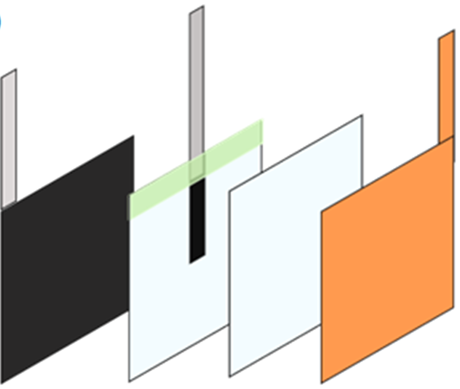27 Feb. 2023 – The report on “Characterization of 3-5 cm2 pouch cells with integrated level-2 sensor” describes the activities related to the characterization of the Li-ion battery pouch cells with graphene-based reference electrodes printed on Celgard 2500 separators, as well as without, in terms of electrodes’ potentials monitoring, galvanostatic charge-discharge (GCD) cycling and electrochemical impedance spectroscopy (EIS) measurements.
The objective of this work was the validation of the level-2 sensors, i.e., graphene-based reference electrodes printed on battery separators, into small-area pouch cells. The effect of the integration of printed graphene-based reference electrodes on the battery cell operation, as well as the possibility to monitor the potentials of the cell electrodes distinctively and to perform operando half-cell impedance measurements, have been researched through the realization of small-area (3 cm2) pouch cells.
The printed graphene-based reference electrodes effectively monitored the potentials of the cells electrodes under both static and dynamic cell operation, while enabling artifact-free EIS measurements. The results of this activity will be used for the realization of 1 Ah multi-layered pouch cell prototype by battery manufacturers participating to SENSIBAT.
The integration of level 2 sensors in battery pouch cells will enable battery parameters, such as electrodes’ potentials and half-cell impedance, to be monitored in operando, enabling the development of advanced battery management systems (BMSs) for reliable and safe Li-ion batteries.

To read the full report, click here.
Involved partners: BDM, POL, VAR



